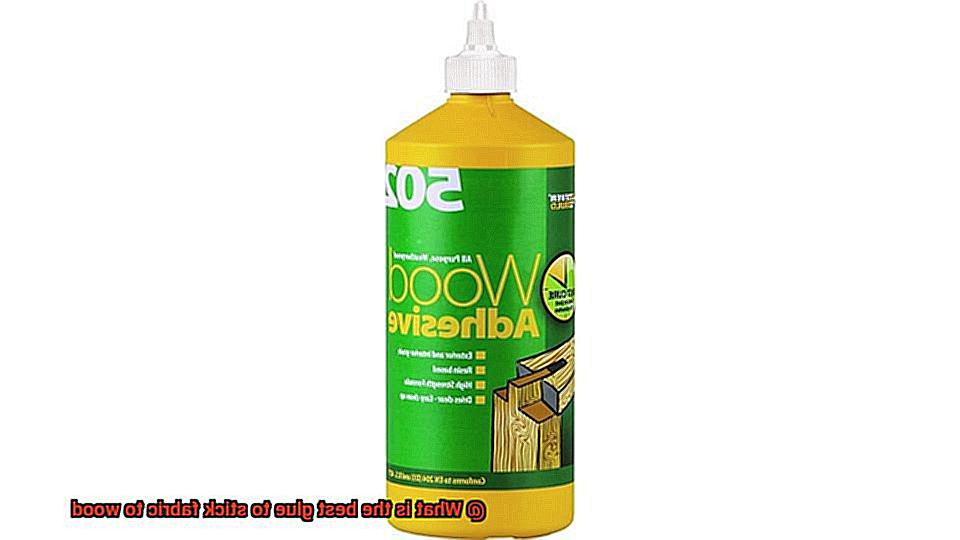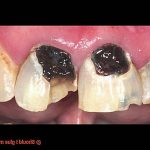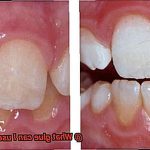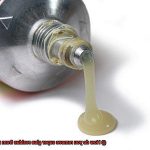Do you find it frustrating when your fabric won’t stick to wooden surfaces? Whether you’re a DIY enthusiast or just want to add some flair to your home, having fabric that doesn’t adhere can be a real headache. But don’t worry, my fellow crafters and decorators. In this blog post, we’ll be exploring the question: What is the best glue to stick fabric to wood?
Although there are countless types of glue on the market, not all of them are suitable for sticking fabric to wood. Some may be too weak, causing your fabric to peel off easily, while others can be too strong and ruin your project altogether. So what should you look for in a glue that will ensure that your fabric stays firmly affixed to your wooden surface?
We’ll dive into various types of glues commonly used such as PVA glue, hot glue and spray adhesive and weigh their pros and cons. We’ll also discuss how to properly prepare surfaces before gluing, how to prevent bleed-through, and other tips and tricks that guarantee a successful project. Say goodbye to constantly peeling fabric and hello to beautifully crafted wooden objects.
Stick around for our expert advice on choosing the perfect adhesive for all your fabric-to-wood projects.
What is Glue?
Contents
Glue is a magical substance that can bring together two surfaces and create a bond that lasts over time. Made from a variety of materials, including natural substances like animal products and synthetic materials like polymers, glue has become an essential tool in various industries, from crafting to construction.

There are many different types of glue available today, each with its unique properties and uses. From white glue to epoxy resin glue, it’s important to choose the right type of glue for your specific project to ensure that it turns out well.
When it comes to sticking fabric to wood, several glues can do the job. The best glue is one that provides a strong bond, is easy to apply, and dries clear. One popular option for larger pieces of fabric is contact cement. This adhesive creates an almost unbreakable bond once the two surfaces touch. However, it’s important to work quickly as contact cement dries fast.
Hot glue is another option that is easy to use and provides a quick bond. However, it may not be the best option for delicate fabrics as it can melt or burn them. White glue or PVA glue is a great option for creating a strong bond between fabric and wood surfaces. It dries clear and requires pressure or clamping while drying to ensure the best results.
Lastly, epoxy resin glue is ideal for heavy-duty projects but requires mixing two parts together before application. It takes longer to dry compared to other glues but creates a strong and durable bond that can withstand heavy use and exposure to the elements.
Different Types of Glue for Sticking Fabric to Wood
PVA Glue
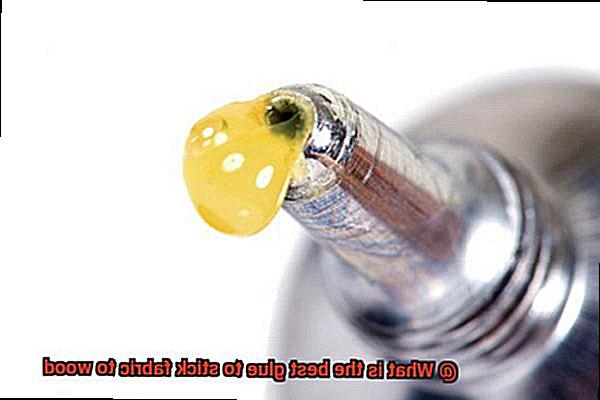
For a clear and easy-to-use solution, PVA glue is a popular choice. It’s perfect for beginners and creates a strong bond that can handle wear and tear. Plus, its versatility makes it a go-to option for many other craft projects.
Epoxy Glue
Need a permanent bond that can withstand the test of time? Epoxy glue is your solution. While it requires mixing before application, it’s known for its incredibly strong bond. It’s perfect for attaching fabric to furniture or home decor items.
Contact Cement
Another strong adhesive option is contact cement, commonly used in woodworking. Its quick-drying formula creates a permanent bond between two surfaces. It’s an excellent choice for larger projects where you need to cover a lot of surface area.
Spray Adhesive
For smaller projects or when you need to stick down a small area of fabric, spray adhesive is a quick and easy solution. However, keep in mind that it may not be as strong as other types of glue over time.
When selecting the best glue for your project, consider the materials you’re working with and the type of bond you need. Following the manufacturer’s instructions is also key to ensuring the best results possible.
Pros and Cons of Contact Cement
It boasts several advantages, but also comes with a few drawbacks to consider.
One of the most significant pros of contact cement is its quick and efficient bonding properties. By applying the glue to both surfaces, waiting a few minutes, and pressing them together, it creates an immediate bond without any additional clamping or holding. Additionally, contact cement is versatile enough to be used on a wide range of materials, such as wood, metal, plastic, and rubber. This makes it an ideal option for those who need to bond different textures and finishes of materials.
However, the permanence of contact cement can be a double-edged sword. Once applied, it becomes difficult to remove or adjust. This means that if you make a mistake during application or need to reposition the fabric, you might face some trouble. Another possible drawback is the strong odor that contact cement emits when applied. This can be overwhelming in poorly ventilated areas, so it’s essential to work in a well-ventilated area and wear protective gear such as gloves and a mask.
Pros and Cons of Hot Glue
It’s a go-to option for sticking fabric to wood, but it’s important to weigh the pros and cons before starting your next project.
On the bright side, hot glue has a quick drying time, making it ideal for projects with tight deadlines. Plus, it’s easy to apply and works well with a variety of materials including fabric and wood. So, if you’re looking for an adhesive that’s easy to use and gets the job done quickly, hot glue might be the way to go.
However, there are some downsides to using hot glue as well. For starters, it can be messy and challenging to clean up if it gets on surfaces where it shouldn’t be. So, if you’re working on a project that requires precision, like reupholstering furniture or creating detailed crafts, you might want to opt for a different adhesive.
Another thing to consider is that hot glue may not hold up as well over time as other types of adhesives, especially in high-heat environments. So, if you’re working on something that will be exposed to heat or humidity, such as outdoor furniture or kitchen items, you might want to choose a stronger adhesive like epoxy or contact cement.
Lastly, it’s worth noting that hot glue may not be the best option for heavy fabrics or large pieces of wood. In these cases, a stronger adhesive might be more appropriate for the job.
Pros and Cons of White or PVA Glue
Look no further than white or PVA glue. This water-based adhesive has a lot of positive attributes, as well as some potential drawbacks.
One of the biggest advantages of using white or PVA glue is its widespread availability and affordability. You can find it at just about any crafting or hardware store, or even order it online. Plus, it’s simple to apply and dries clear, making it perfect for use with light-colored fabrics.
Another great feature of white or PVA glue is its water solubility. If you make a mistake during the gluing process, it’s easy to clean up with a damp cloth before it sets. And if you need to remove the fabric later on, just apply water and gently peel it away without damaging your project.
However, there are some cons to consider when using white or PVA glue. It may not be as robust as other types of adhesives, like superglue or epoxy, which could be problematic if you’re working with heavier fabrics. Additionally, it may not hold up well in humid environments, extreme temperatures, or exposure to moisture and sunlight over time.
Pros and Cons of Epoxy Resin Glue
This two-part adhesive boasts impressive strength and durability, making it an ideal option for projects that require a sturdy and long-lasting bond.
One of the most significant advantages of using epoxy resin glue is its ability to resist water and other types of damage. This feature makes it a great choice for outdoor projects or items that will be exposed to moisture. Additionally, this type of glue dries clear, leaving no visible residue on the fabric or wood. As a result, you can achieve a neat and professional-looking finish that will make your project stand out.
However, there are also some downsides to using epoxy resin glue. It can be tricky to work with, especially if you’re not experienced with two-part adhesives. Moreover, the curing process can take several hours or even days, meaning that you’ll need to exercise patience before handling or using the item.
Another potential issue with epoxy resin glue is its cost. It can be quite expensive compared to other types of adhesive, which may not be ideal if you’re working on a tight budget or need a large amount for a bigger project.
x0XTqLN4hKQ” >
Conclusion
Selecting the right glue is critical when it comes to sticking fabric to wood. The market offers a variety of adhesives, making it challenging to choose one that won’t damage your project while providing a strong bond. But don’t worry, with some simple tips and tricks, you can ensure your fabric remains securely affixed to your wooden surface.
Consider the type of glue you’re using. PVA glue, hot glue, contact cement, and epoxy resin glue are all excellent options for sticking fabric to wood. Each has its unique properties and uses, so make sure you select the right one for your specific project.
Properly preparing surfaces before gluing is key to ensuring a successful outcome. Remember always to clean and dry both surfaces thoroughly before applying any adhesive.
Lastly, follow the manufacturer’s instructions carefully when applying glue. This includes using the appropriate amount of pressure or clamping during drying time and allowing enough time for the adhesive to set properly.
By keeping these tips in mind and selecting the best glue for your project’s needs, you’ll be able to create beautifully crafted wooden objects with perfectly adhered fabric.

